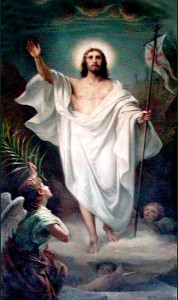While to some people Easter is a secular holiday about bunnies, dyed eggs, and candy, in the predominantly Catholic countries of South America, Easter is celebrated with an entire week of religious observances, including special church services, festivals, and processions.
The week of Easter is called Semana Santa, and commemorates the resurrection of Jesus Christ. Each day of the week is associated with a different part of the resurrection timeline. Even if you are not a believer yourself, it is interesting to know the meaning of the various days as a means of understanding local culture better.
 Domingo de Ramos (Palm Sunday)
Domingo de Ramos (Palm Sunday)
On this day, people remember Jesus’ triumphant return to Jerusalem, as had been prophesied in the Old Testament. The people of the city welcomed him and recognized him as the Messiah.
Lunes Santo (Holy Monday)
Mary’s humble display of devotion, in which she anointed Jesus’ feet with expensive spikenard ointment and dried them with her hair, is remembered on this day.
Martes Santo (Holy Tuesday)
Jesus predicts that Judas will betray him and that Peter will deny him three times.
Miércoles Santo (Holy Wednesday)
Judas agrees to lead the authorities to Jesus in exchange for 30 pieces of silver.
Jueves Santo (Maundy Thursday)
This day is associated with the Last Supper. During this meal, Jesus shared bread and wine with his disciples, an act which provided the inspiration for the Catholic communion service.
Viernes Santo (Good Friday)
Jesus is mocked, whipped, crowned with thorns, and crucified.
Sábado Santo (Holy Saturday)
On this day the Catholic church holds a special “Vigilia Pascual” or Easter Vigil service.
Domingo de Resurrección (Easter Sunday)
Jesus’ resurrection proves his divine authority and status as the Messiah. Easter Sunday also serves as the official end to Lent.